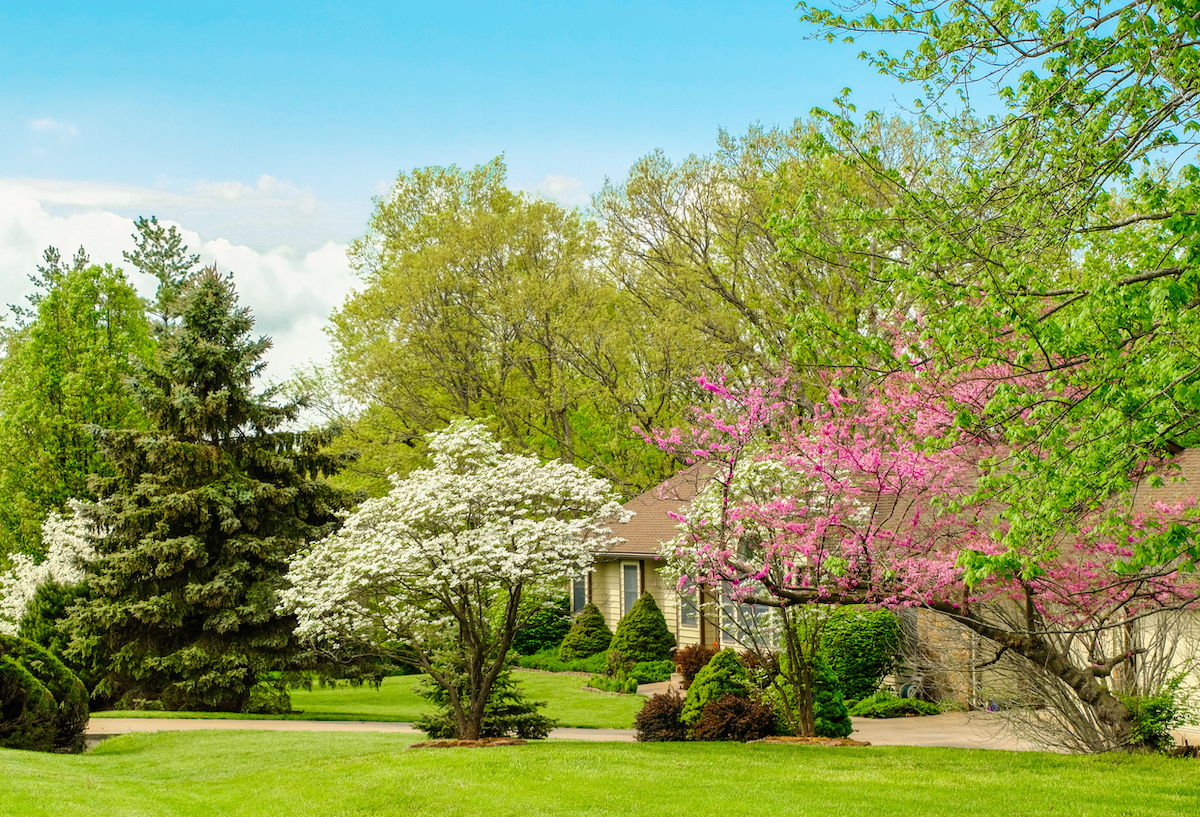We may earn revenue from the products available on this page and participate in affiliate programs. Learn More ›
If you wish to decorate your landscape with small flowering trees, you’ll likely want to choose at least one or two varieties that bloom in a season other than spring. And if it’s colorful trees you’re particularly after, note that the difference between flowering trees and shrubs frequently depends on how the plants are pruned.
If you want your backyard trees to stay trees rather than expanding into bushes, you’ll need to remove suckers to preserve a single trunk—or at least no more than two or three trunks! Choose dwarf flowering trees if you need to keep them short.
Here are some flowering tree species all gardeners should get to know for yearlong beauty around their homes.
1. Chaste Tree (Vitex agnus-castus)
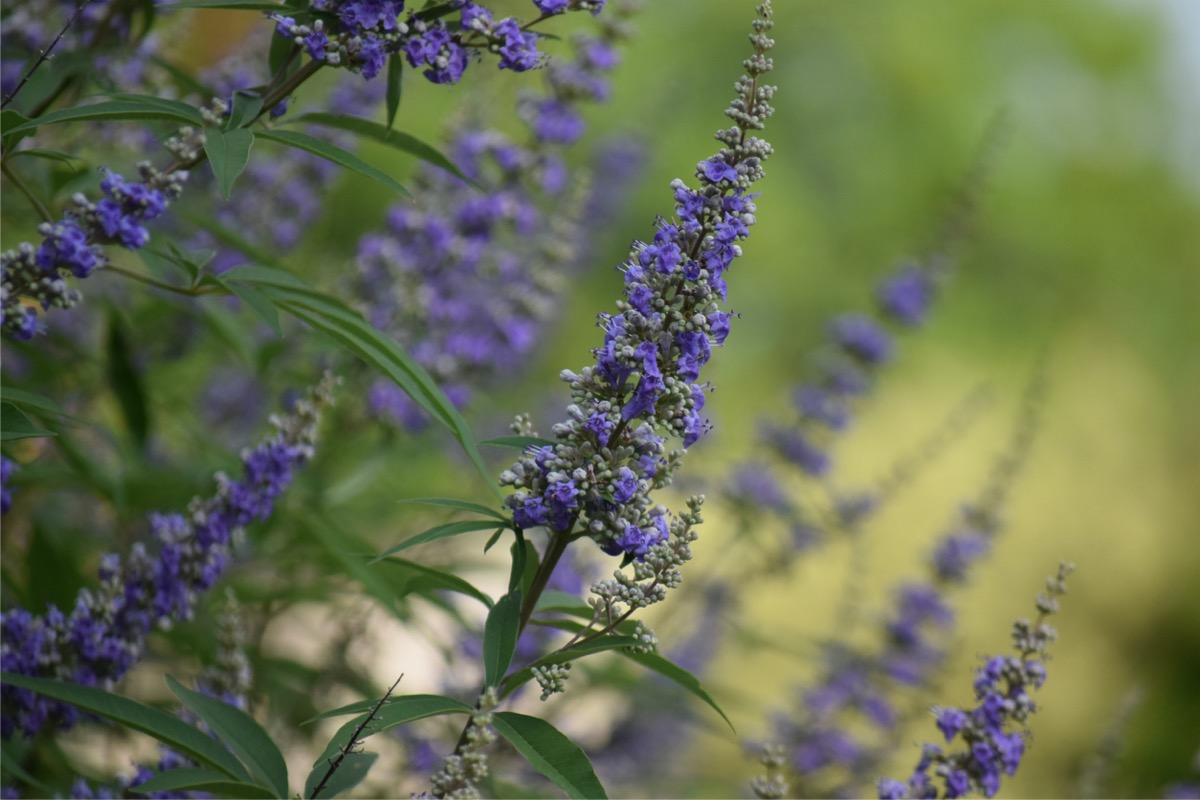
Although this deciduous tree can survive in USDA Zones 5 and 6, chaste trees die back to the ground over winter in those colder zones and won’t grow higher than 5 feet in summer. In the South, a chaste tree might reach 25 feet with palmate gray-green, five- to seven-fingered foliage. The tree blooms summer through autumn with 6- to 12-inch spikes of fragrant lavender, pink, or white flowers. It prefers full sun to partial shade in soil that drains well.
Key Characteristics: This tree’s size varies according to zone, growing from 5 to 25 feet in height with “wands” of typically purple or lavender blooms, but there are pink and white cultivars as well.
Hardiness Zones: USDA Zones 5 to 9
RELATED: 12 Things an Arborist Wishes You Knew
2. Chinese Witch Hazel (Hamamelis mollis)
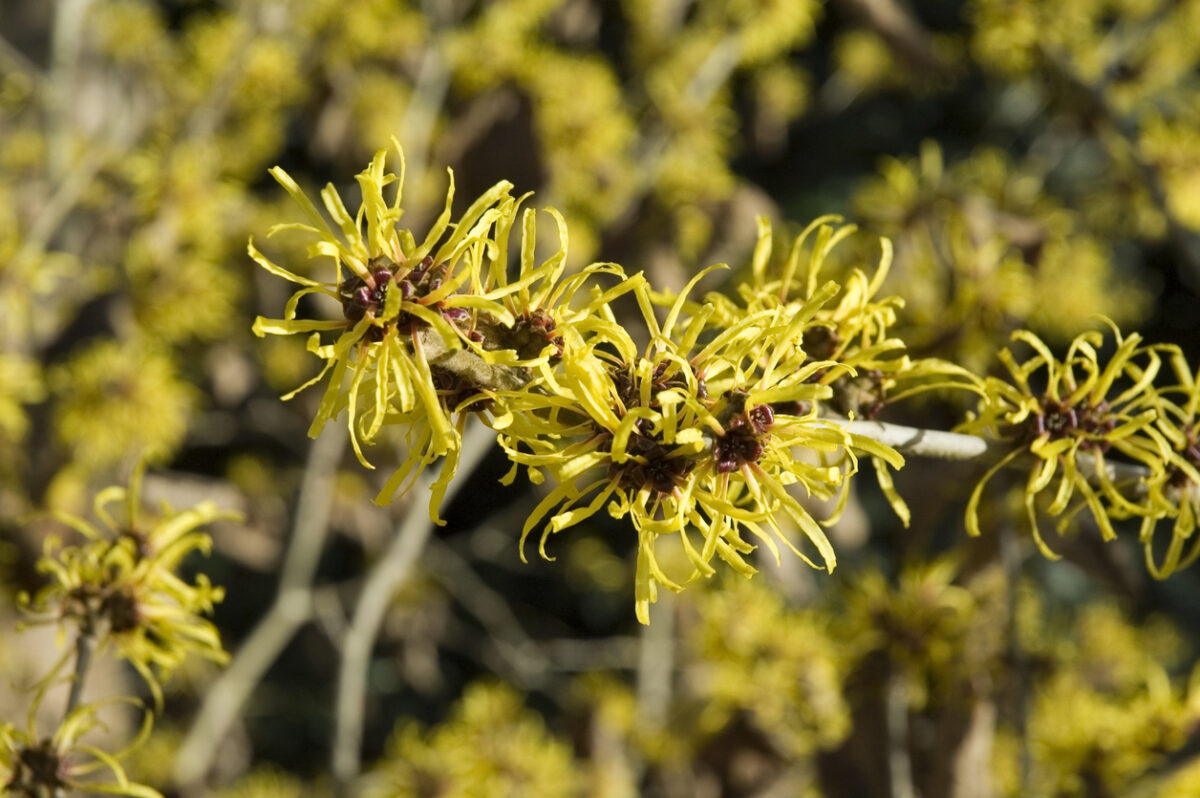
One of the earliest-blooming flowering trees, Chinese witch hazel grows to a height of 30 feet. Its cultivars produce 1½-inch sweet-smelling yellow flowers with rust-colored sepals in late winter. These bloom before the tree’s roundish 3- to 6-inch green leaves with gray undersides appear, which turn yellow or orange before they drop in autumn. Give the tree full or partial sun in fertile, acidic soil.
Key Characteristics: Chinese witch hazel can reach heights up to 30 feet and fill with spidery yellow and rust-colored flowers during late winter.
Hardiness Zones: USDA Zones 5 to 8
3. Crape Myrtle (Lagerstroemia indica)
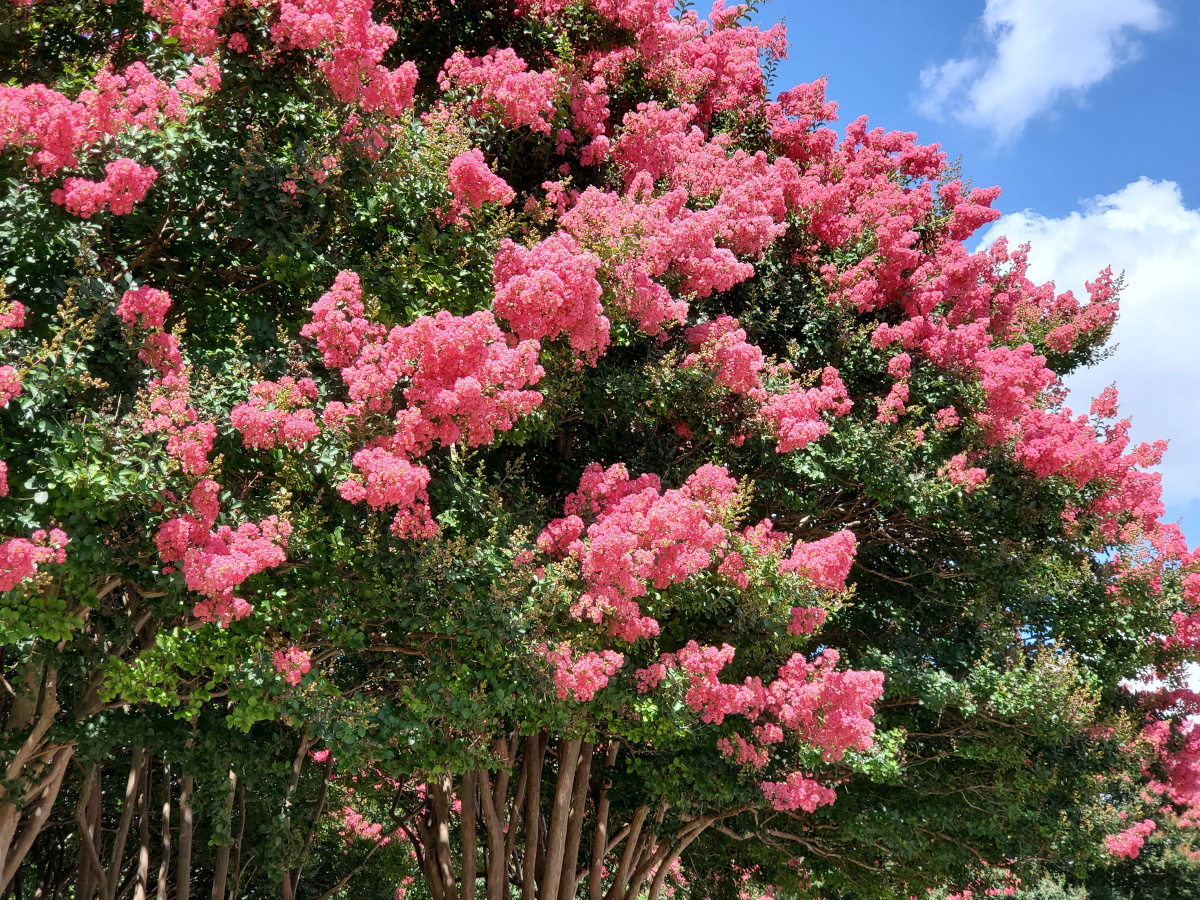
After all the spring trees have finished flowering, this deciduous tree blooms during the hottest part of summer in the South. It produces crinkly pink, red, purple, or white ½-inch to 1-inch bloom clusters accompanied by simple 1- to 2¾-inch leaves. Crape myrtle typically reaches heights between 8 and 25 feet and boasts attractive peeling bark and orange or red fall foliage. Give it moist, alkaline, well-draining soil in full sun.
Key Characteristics: These colorful trees eventually should reach heights of 8 to 25 feet and produce clusters of paper-like blooms in pink, red, purple, white, or bicolors.
Hardiness Zones: USDA Zones 7 to 9
4. Eastern Redbud (Cercis canadensis)
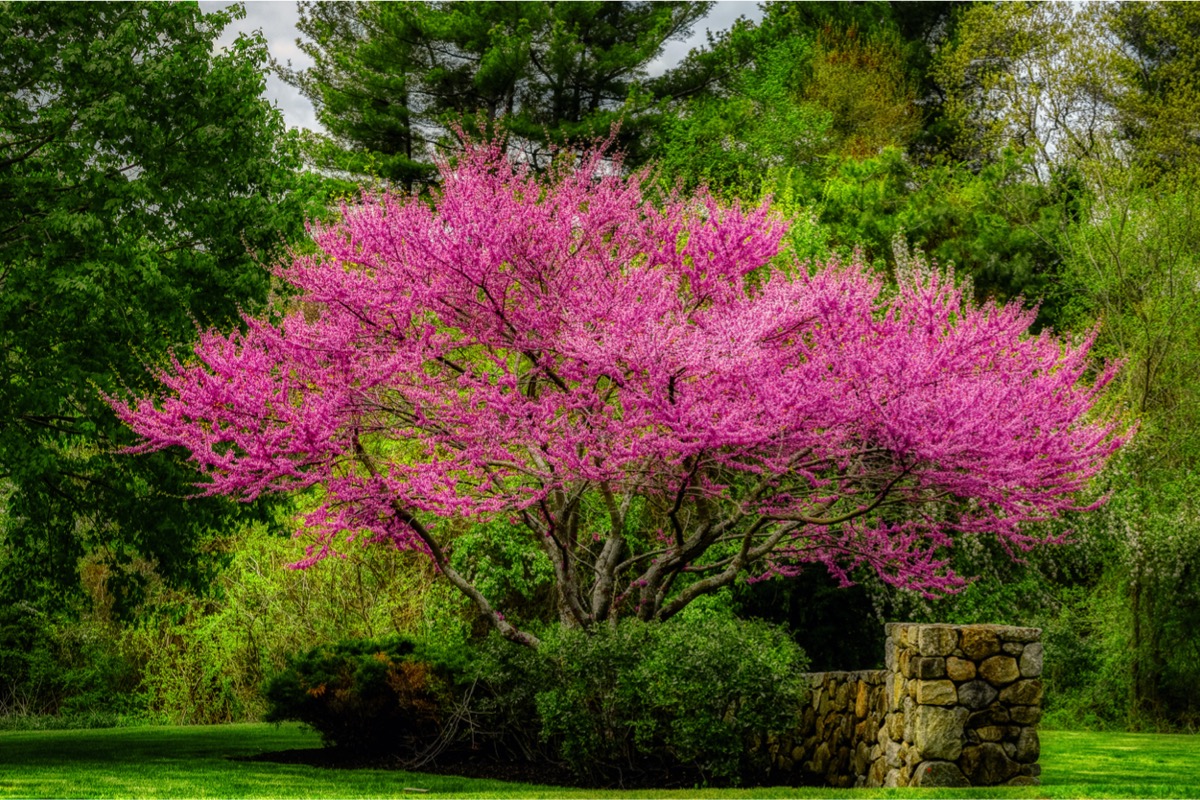
A pink-blossom tree despite the red in its name, redbud’s sweet-pea-like flowers vary from rose to pinkish-lavender or purple. Growing from 8 to 35 feet tall, this tree has 3- to 5-inch heart-shaped leaves in a variety of colors, according to cultivar, from plain green to purple to variegated. The flowers appear before that foliage in early spring. The tree prefers full sun or partial shade in sandy, well-draining soil.
Key Characteristics: The eastern redbud tops out at some point between 8 and 35 feet tall, depending on the cultivar, and produces flowers resembling sweet peas in pink or purple hues in early spring.
Hardiness Zones: USDA Zones 4 to 9
5. Empress Tree (Paulownia tomentosa)
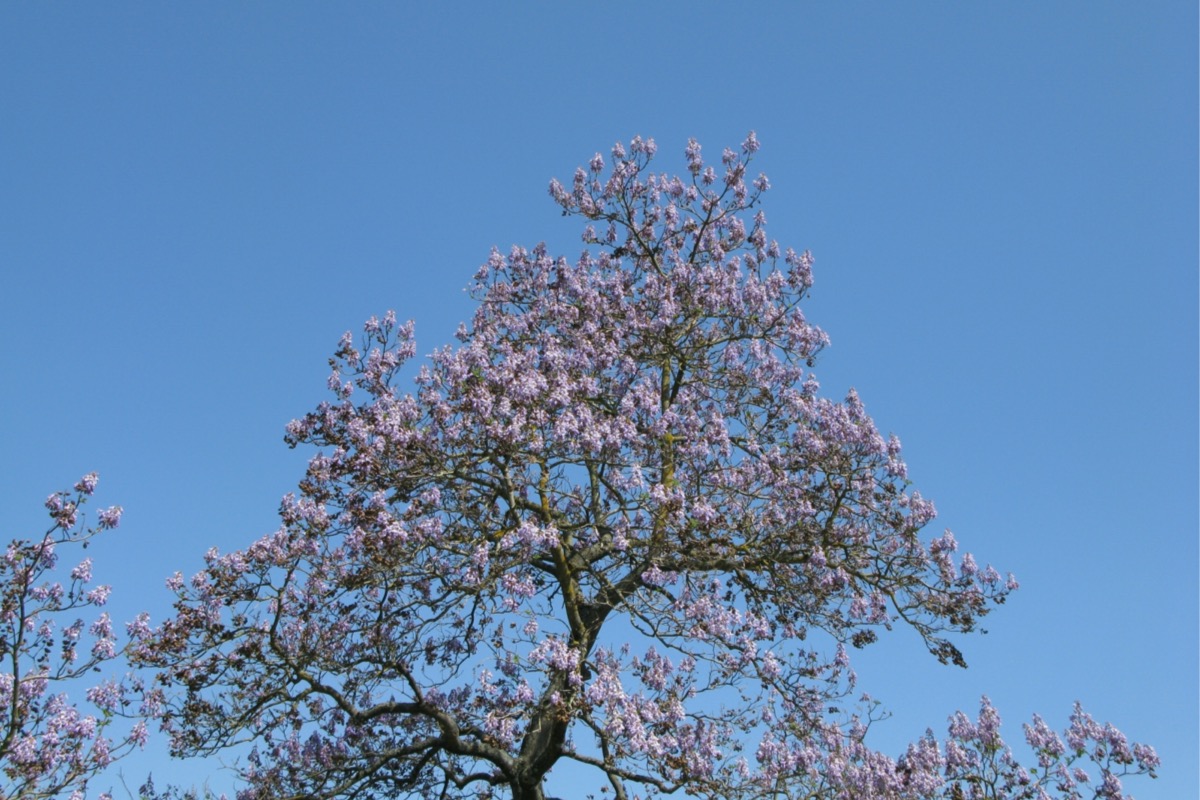
Among blossom trees, the empress produces some of the most impressive blooms. Its trumpet-shaped, yellow-striped lavender flowers smell of vanilla and appear in clusters reaching a foot across in early spring. Since the deciduous heart-shaped leaves also can grow a foot long on a tree that might reach 50 feet, the looming empress can shade out understory plants and be invasive. “She” prefers sandy, well-draining soil in full sun.
Key Characteristics: Large and lavish, the empress tree grows to a height of 50 feet, producing lavender bugle-shaped flowers in early spring. It’s likely to die back to the ground in winter—and not flower—in the coldest zones where it is hardy.
Hardiness Zones: USDA Zones 5 to 9
6. Flowering Crabapple (Malus hybrids)
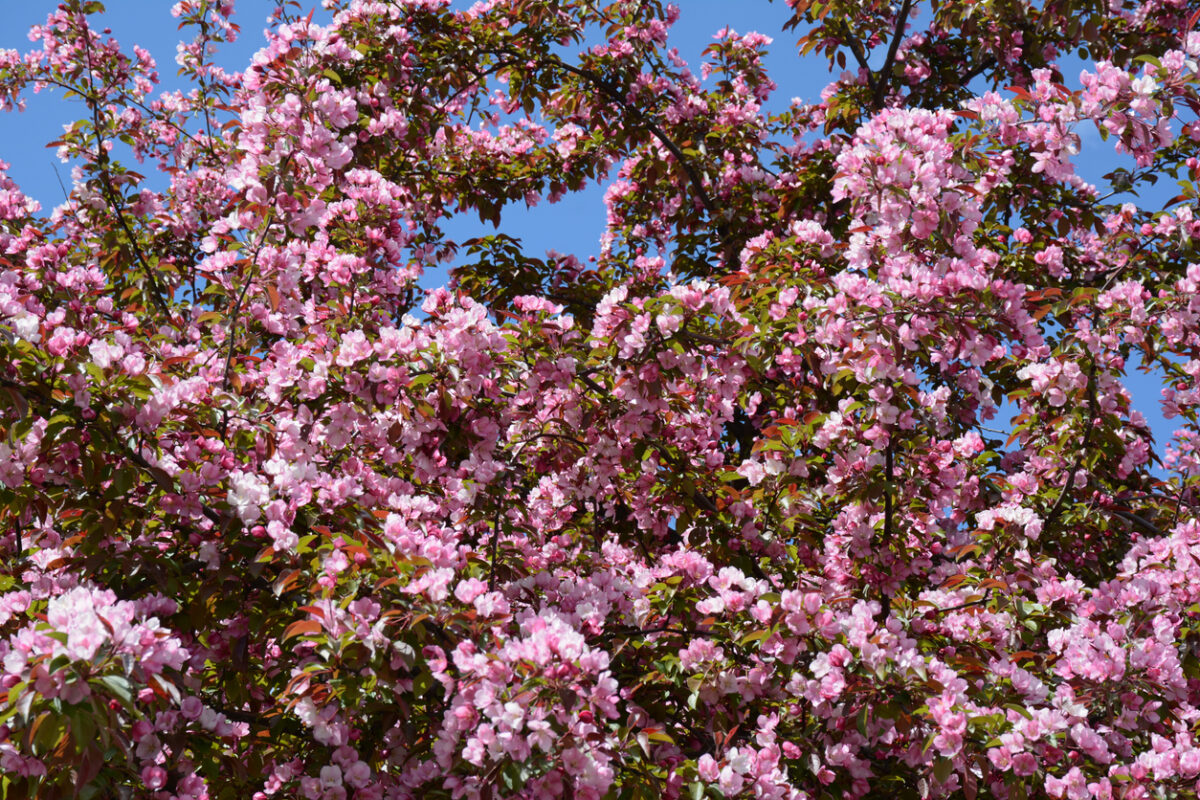
One of the most popular of flowering trees, deciduous flowering crabapple grows from 10 to 30 feet tall and produces single or double white, pink, or red flowers in spring. Its 2- to 4-inch leaves sometimes turn yellow in autumn, and the tree can bear bitter ornamental fruits up to 2 inches in diameter, which are sometimes used to make jellies. Give this apple full sun in moist but well-draining soil, preferably a bit on the acidic side.
Key Characteristics: Flowering crabapples, varying in height from 10 to 30 feet, provide mid-spring blooms in white, pink, or red, sometimes followed by fall fruits.
Hardiness Zones: USDA Zones 4 to 8
RELATED: 14 Long-Lasting Flowers for Your Yard
7. Japanese Camellia (Camellia japonica)

Highly popular in southern and coastal zones, the evergreen Japanese camellia typically grows between 6 and 12 feet tall. It produces glossy 2- to 3-inch leaves and large 3- to 5-inch blooms in white, pink, red, or multicolored hues in autumn and winter, when few other trees bloom. Late varieties may continue flowering until the end of spring. Give it well-draining, slightly acidic soil in full to partial shade.
Key Characteristics: This tree grows to up to 12 feet in height and has unscented 3- to 5-inch blooms in shades of pink, red, or white.
Hardiness Zones: USDA Zones 7 to 9
8. Japanese Flowering Cherry (Prunus serrulata)
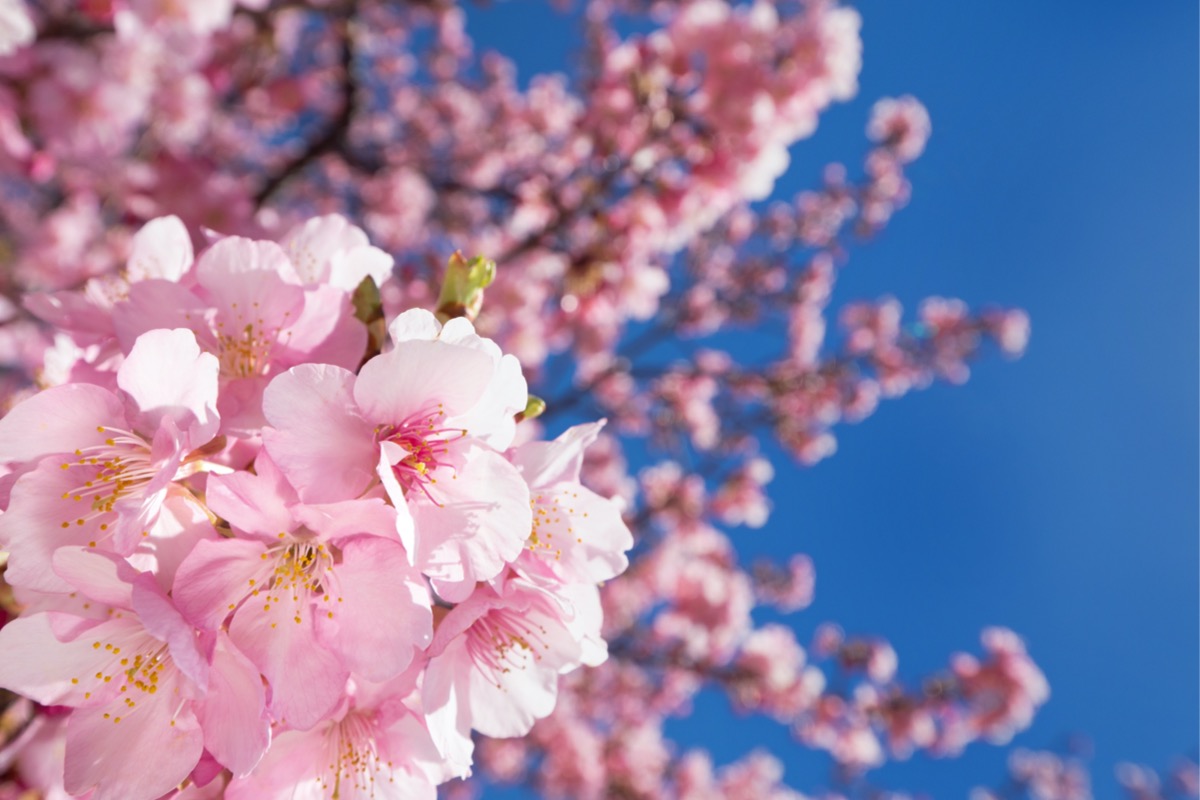
Japanese flowering cherries vary according to cultivar (the most popular probably being Kwanzan), but most are pink flowering trees with a few white flowering trees thrown in. They grow from 15 to 25 feet in height with blooms that can be single, semidouble, or double and appear against bark the shade of a polished mahogany table. The 3- to 6-inch leaves turn orange or burgundy before they fall. This tree prefers well-draining soil in full sun.
Key Characteristics: These blossom trees reach 15 to 25 feet in height and produce pink or white spring flowers but rarely fruit.
Hardiness Zones: USDA Zones 5 to 8
9. Japanese Tree Lilac (Syringa reticulata)
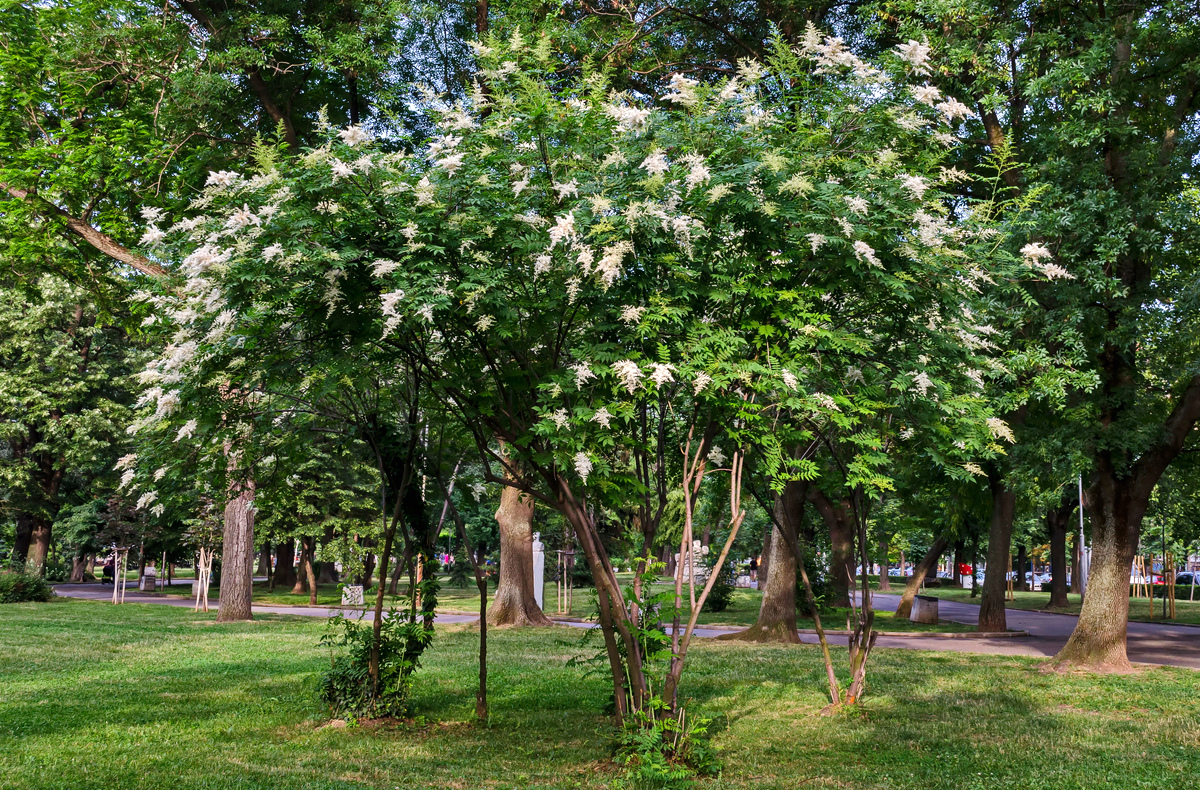
Among purple flowering trees, lilac still reigns supreme, though vulgaris varieties generally take the form of a shrub rather than a tree. However, this Japanese type is a tree that grows to 30 feet high. Its small white flowers appear in clusters—which can reach a foot in length—in early summer. They have a musky, privet-like odor rather than a typical lilac scent. The tree lilac prefers full sun along with well-draining acidic soil.
Key Characteristics: The Japanese tree lilac reaches 30 feet in height and has plumes of small white flowers in early summer.
Hardiness Zones: USDA Zones 3 to 7
10. Kousa Dogwood (Cornus kousa)
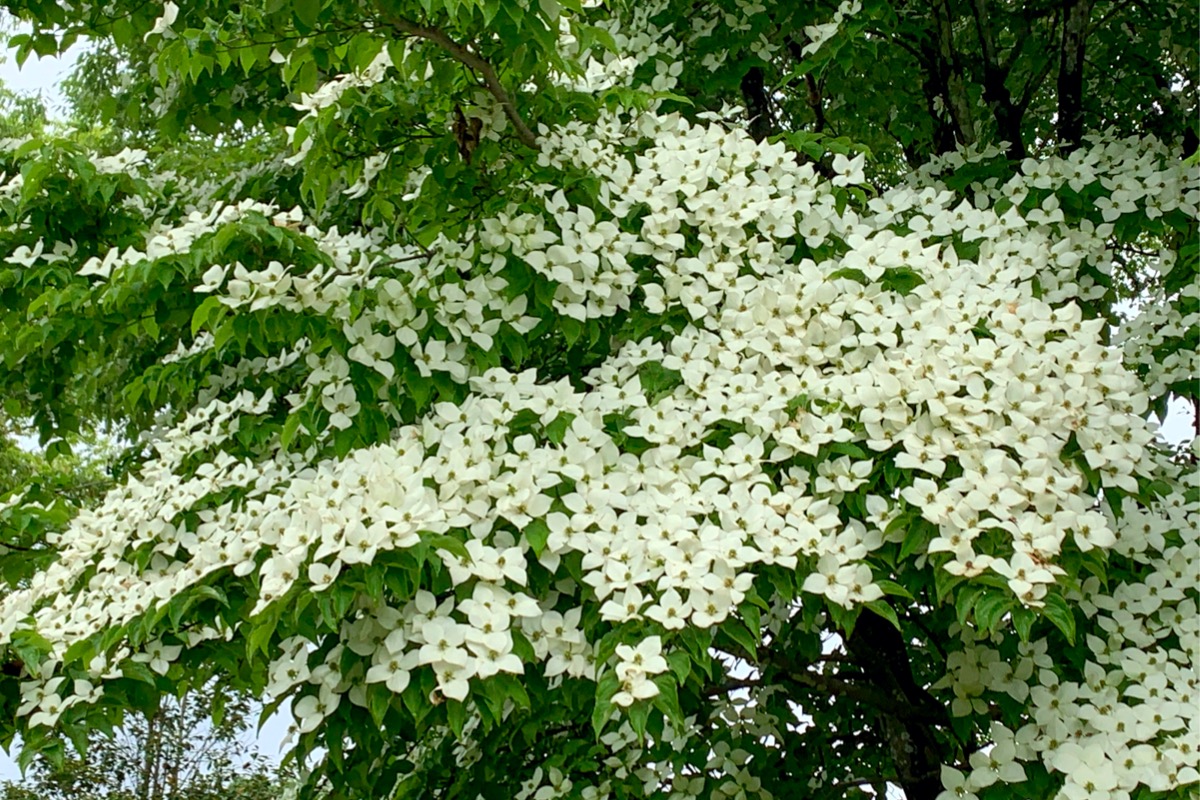
This deciduous Eastern dogwood is more resistant to fungal disease than the native type and blooms in late spring. It can grow to 20 feet tall and has 4-inch leaves and 3- to 6-inch flowers composed of white bracts, which pinken as they age. They are followed by red, raspberry-like fruits in late summer, after which point the foliage turns maroon. This dogwood prefers a location with morning sun, afternoon shade, and acidic soil that drains rapidly.
Key Characteristics: These flowering dogwood trees top out at 20 feet and offer large white blooms, red berries, and colorful fall foliage.
Hardiness Zones: USDA Zones 5 to 8
RELATED: 7 Signs Your Tree is Dying—and How to Save It
11. Star Magnolia (Magnolia stellata)

A tree with pink flowers—or white ones, depending on the cultivar—the star magnolia grows 10 to 24 feet tall and has blooms 3 to 5 inches across. Those flowers appear in late winter or early spring before the tree’s foliage does, and each one is made up of 12 to 50 narrow segments called tepals. The leathery 1- to 2-inch leaves turn golden in autumn. Give this magnolia full to partial sun in moist but well-draining soil.
Key Characteristics: Reaching 10 to 24 feet in height, the star magnolia produces white or pink many-segmented blooms in late winter or early spring.
Hardiness Zones: USDA Zones 4 to 8

